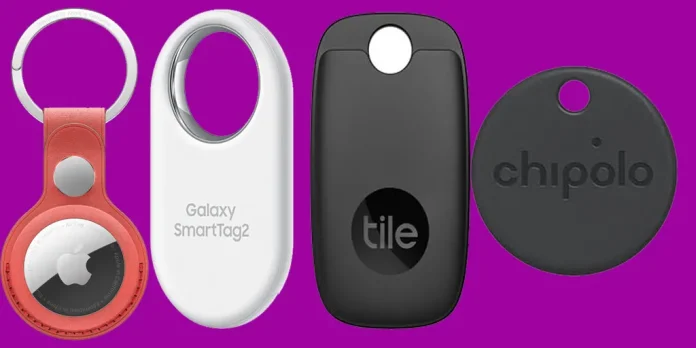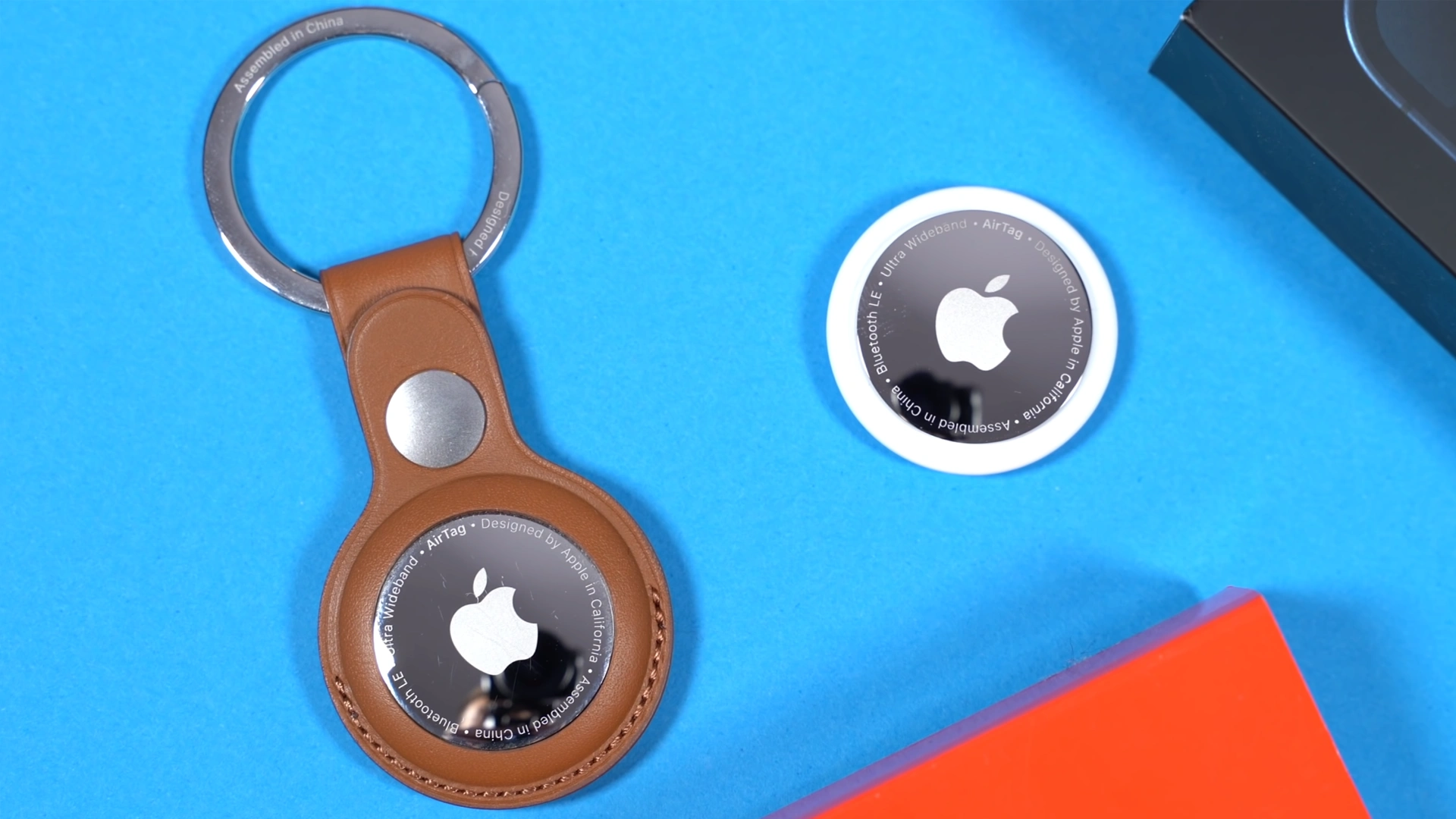Determining the most popular Smart Tag can be challenging due to several influencing factors:
Factors Influencing Smart Tag Popularity:
- Brand: Smart Tags from well-known brands like Apple or Samsung tend to be popular due to strong brand recognition.
- Usability and Versatility: Some Smart Tags only work with either Android or Apple. For instance, if you have an Android phone, you don’t need an Apple Smart Tag.
- Software and Application Usability: While the usability of the accompanying software and applications is a factor, it is usually not a major concern. The primary purpose of a Smart Tag is to locate lost items, so specialized features are typically unnecessary.
- Lesser-known companies often create universal tags that work with both iOS and Android.
Most Popular Smart Tags:
- Apple AirTag
- Samsung Galaxy SmartTag
- Tile Mate
- Chipolo One
Learn more about some of the features of Smart Tag.
Apple AirTag – Features and functions description
- Price: $29.00 or 4 for $99.00
- App: Find My
- Works only with Apple devices
- Water resistance: IP67
- Battery: CR2032, lasts up to 400 days
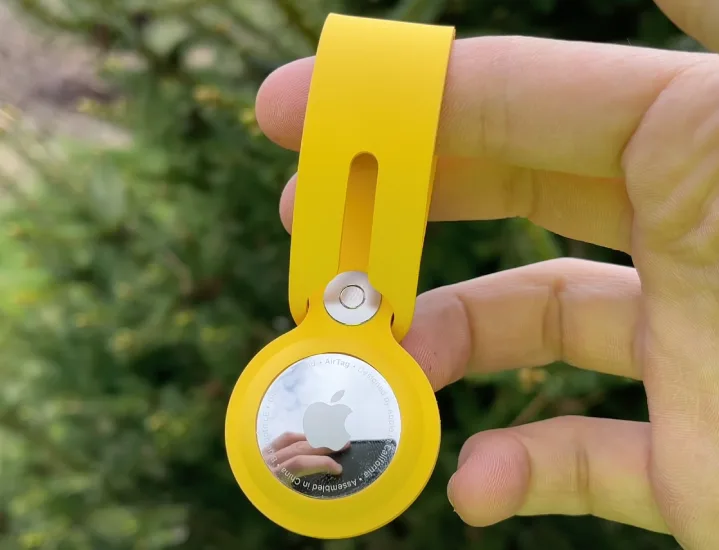
AirTag will only work for you if you use Apple devices, as it is integrated with the Find My app. Works uses Bluetooth to communicate with your iPhone, iPad or Mac.
Hooking it up is a breeze. Your device spots it automatically, and you can add it to Find My, naming it after whatever you’re tagging, like “keys” or “backpack.”
If the tracker’s nearby, use its precision finding to lead you to your lost item. Just pop open Find My and hit “Directions.” You’ll see arrows guiding you right there. Compared to Samsung’s SmartTag 2, AirTag’s a bit behind since Samsung’s SmartThing app nails it with AR directions using your camera.

There’s also a “Play Sound” option in the app to make your AirTag beep. But to me, the sound’s softer than I’d like.
If the AirTag is out of range of your iPhone, you’ll still be able to find it. In any crowded place, it’s easy because almost everyone around you uses an iPhone. If someone with an iPhone passes within range of the tag, it will anonymously determine its location from that phone and transmit it to you through the Find My app. It’s anonymous. You’ll be able to use the prompts in the app to find your AirTag.
If your iPhone spots an AirTag moving with you that’s not yours, you’ll get a heads-up. And if an AirTag’s away from its owner for over three days, it chirps.
AirTag’s IP67 means it can take a dunk in water up to 3 feet deep for 30 minutes.
Sadly, no keyhole like Tile Pro or SmartTag 2, so you’ll need an accessory to attach it to stuff. Apple sells those. One downside of my AirTag? It scratches easily. And hey, no subscription fees to use AirTag, unlike Tile, for instance. I also don’t like that AirTag doesn’t save my cat’s walking history like Samsung’s SmartTag 2 does.

SmartTag 2 – Features and functions description
- Price: $29.00
- App: SmartThings Find
- Works only with Galaxy devices
- Water resistance: IP67
- Battery: CR2032, lasts up to 700 days
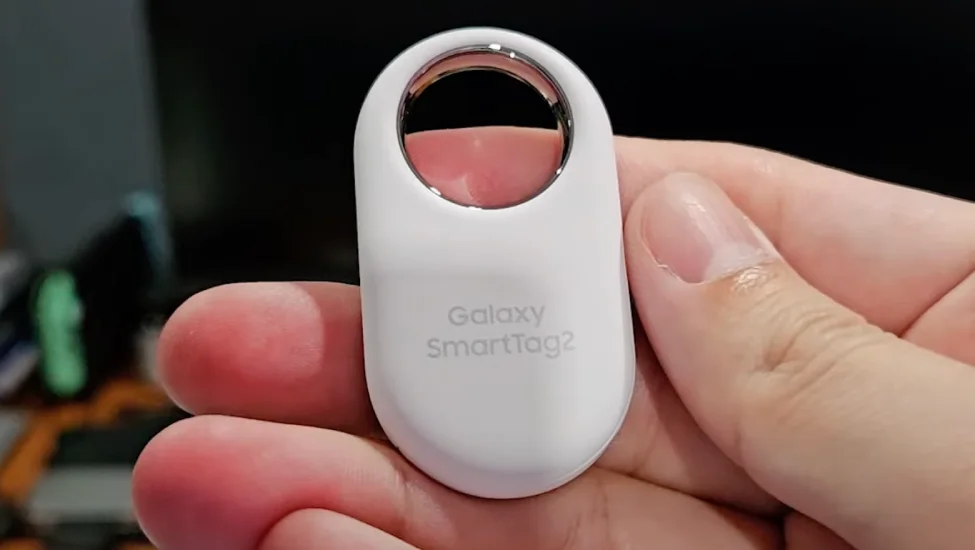
Honestly, I dig how Samsung did their tracker more than Apple’s. SmartTag 2 works in a similar way but packs more features in the app.
First off, SmartTag 2 is a buddy for Galaxy phones with Ultra-Wideband tech. It’s made for the Samsung Galaxy ecosystem. The big reason it’s Galaxy-only is ’cause it ties into Samsung’s SmartThings app.
Price-wise, battery life, and water resistance are on par with AirTag.
Pairing with the app is just as easy. Bring your Smart Tag close to your Galaxy device and tap “Add”. Smart Tag 2’s got a range of about 400 feet. If your stuff’s within range, SmartThing uses your camera for AR directions to show you where your SmartTag 2 is.
If SmartTag 2’s out of range, SmartThings taps into the Galaxy Find Network. If someone with a Galaxy phone comes near your lost SmartTag 2, the app’ll let you know its last known spot and help you find your stuff.
Samsung’s SmartTag2 also looks out for tags that might be following you. But it’s not automatic. You gotta launch a “search for unknown tag” through the SmartThings app on your Galaxy phone.
Smart Tag 2 is also great for keeping tabs on pet walks. Clip a SmartTag 2 to your cat or dog’s collar, and you can track their location, check out walk history, see average move time, walk counts, and even add your pet’s weight and name.
And you can use Smart Tag 2 with your smart home. It integrates with home automation via the SmartThings app, letting you control smart home devices like lights, air conditioners, TVs, and more. This happens through a Bluetooth connection between the Smart Tag and your phone, which connects to your home via Wi-Fi or other internet connections. Just set up an action in the app settings and use the button on Smart Tag 2 to control.
Feature-wise, Smart Tag 2 is top-notch. So if you’ve got a Galaxy phone, it’s the best pick.
Tile – Features and functions description
- Price: Tile Pro – $34.99, Tile Mate – $24.99, Tile Slim – $34.99, Tile Sticker ( for cats) – $29.99
- App: Tile
- Works with iOS and Android
- Water resistance: IP67
- Battery: CR2032
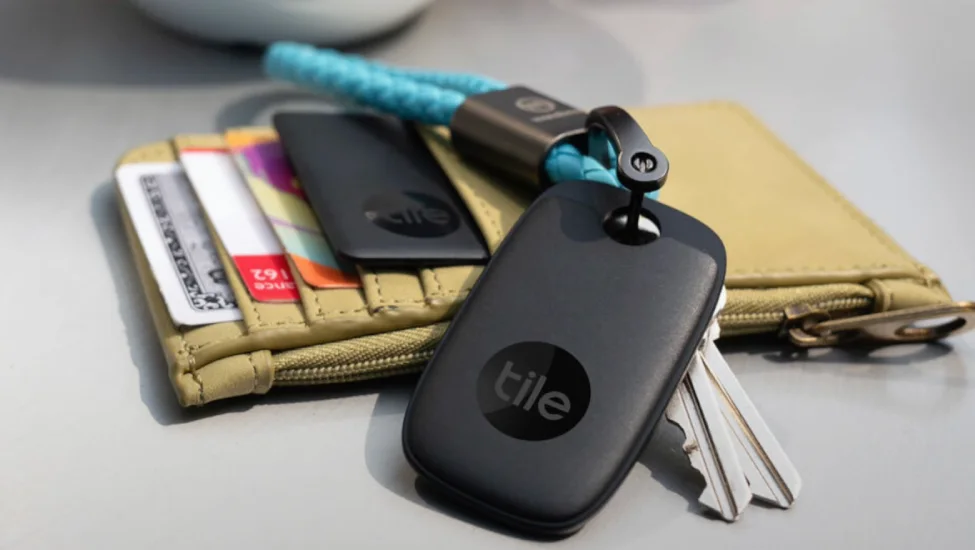
Tile trackers work with both iOS and Android. Tile has different models and sizes: Pro, Mate, Slim, and Sticker. Like, there’s this thin tracker perfect for wallets, which is cool. They differ in range, price and size.
Here, I wanna talk about the Pro model ’cause it’s kinda similar in features to other companies’ trackers. Battery life and range are on par with Smart Tag 2 and AirTag. And yeah, it’s waterproof.
Once hooked up, using the Tile app is a breeze. All your Tile trackers show up on the main screen. Lost something nearby? Just hit Find. And to find your phone, press the button on your Tile.
You can even use your voice to find stuff around the house. Just ask Amazon Alexa or Google Assistant to find your wallet, car keys, or whatever you’ve tagged with Tile. That’s a big plus right there.
If your Tile’s out of range, you’ll see its last known location on the app’s map. Mark your Tile as “lost,” and if another user’s phone spots your “lost” device, you’ll get a heads-up. There’s also a QR code on the back that says, “Scan me if found”.
The gist is the same, but remember, there might be fewer folks using the Tile network.
Tile also offers a subscription for $2.99 a month. You get features like a heads-up if you’re leaving something behind. So, you’ll know if you’re walking away without your Tile. Another perk of Tile Premium is a 30-day location history of your tracker. Basically, it shows where your device has been.
Chipolo One – Features and functions description
- Price: $28
- App: Supports Apple’s Find My network and Google’s Find My Device
- Works with iOS and Android
- Water resistance: IPX5
- Battery: CR2032, up to 2 years
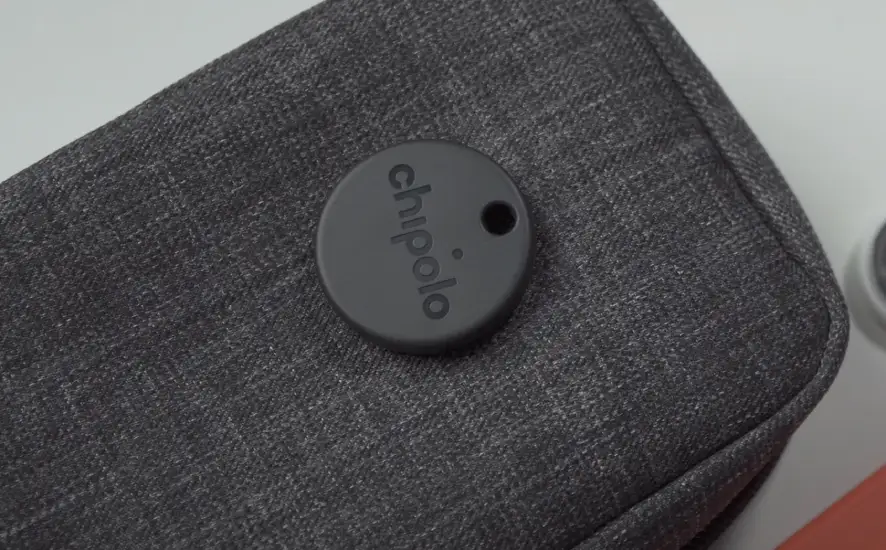
Chipolo works with both iPhones and Android smartphones. On their website, they’ve got two separate products labeled for Apple’s Find My and Google’s Find My Device app. Setting up the Card Spot is super easy. Just open the Find My app on your iPhone or Find My Device on Android, hit “Add another item”, and press the tiny button on the Chipolo. After that, you control it through the Find My and Google’s Find My Device apps.
If your Chipolo is out of range (which, by the way, is up to 300 feet), the app will show its last known location on a map.
Like with AirTags, you can also turn on Lost Mode. When you do, you’ll get a notification when your Chipolo is found, and you can leave a phone number or message for whoever finds it to get in touch with you. Plus, Lost Mode locks the Chipolo to your Apple ID, so no one else can pair with it. And yeah, it works the same way on Android.
Then, other nearby Chipolo users can help you find your lost stuff. But remember, only Chipolo users can help, so there might be fewer out there compared to AirTags. But in crowded places, finding help shouldn’t be an issue.
Overall, Chipolo doesn’t really stand out from other trackers. It’s not better or worse, just good at what it does.

